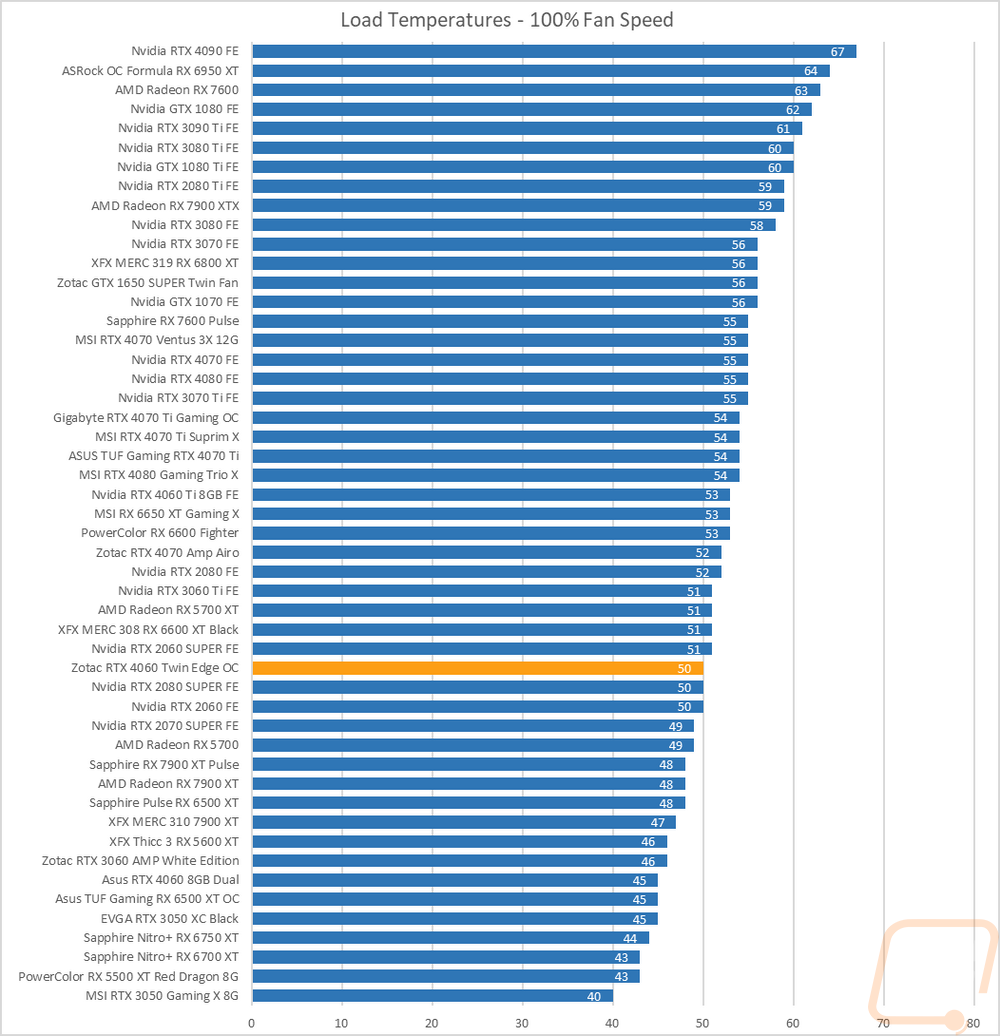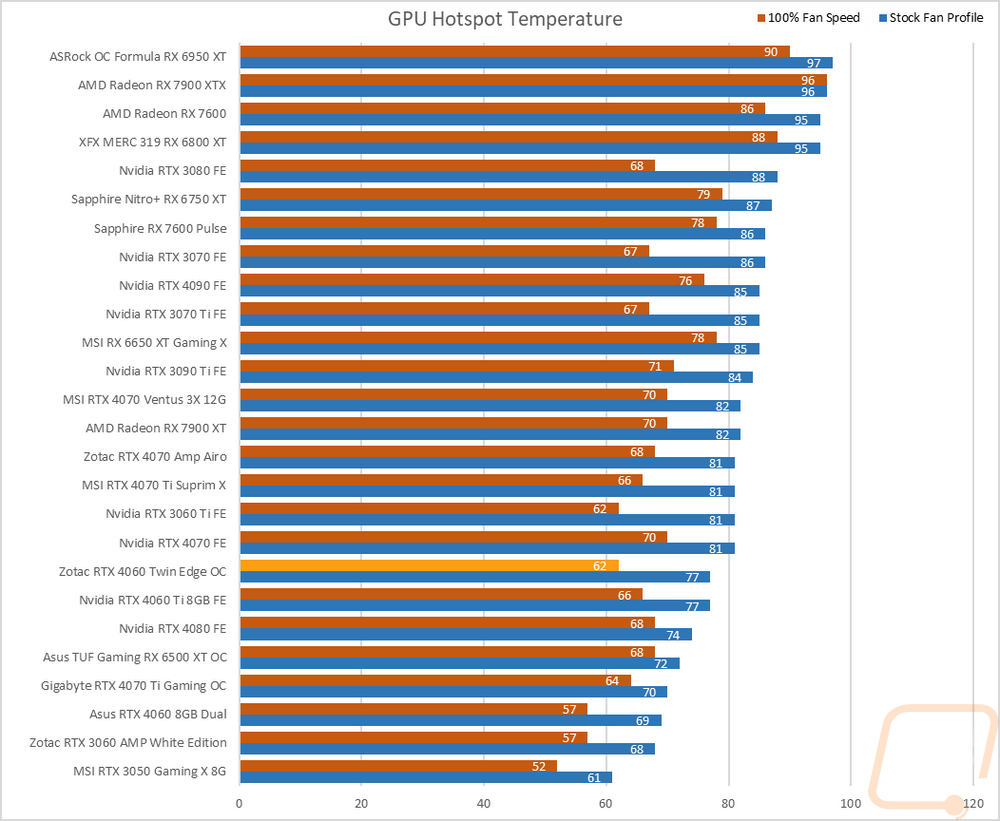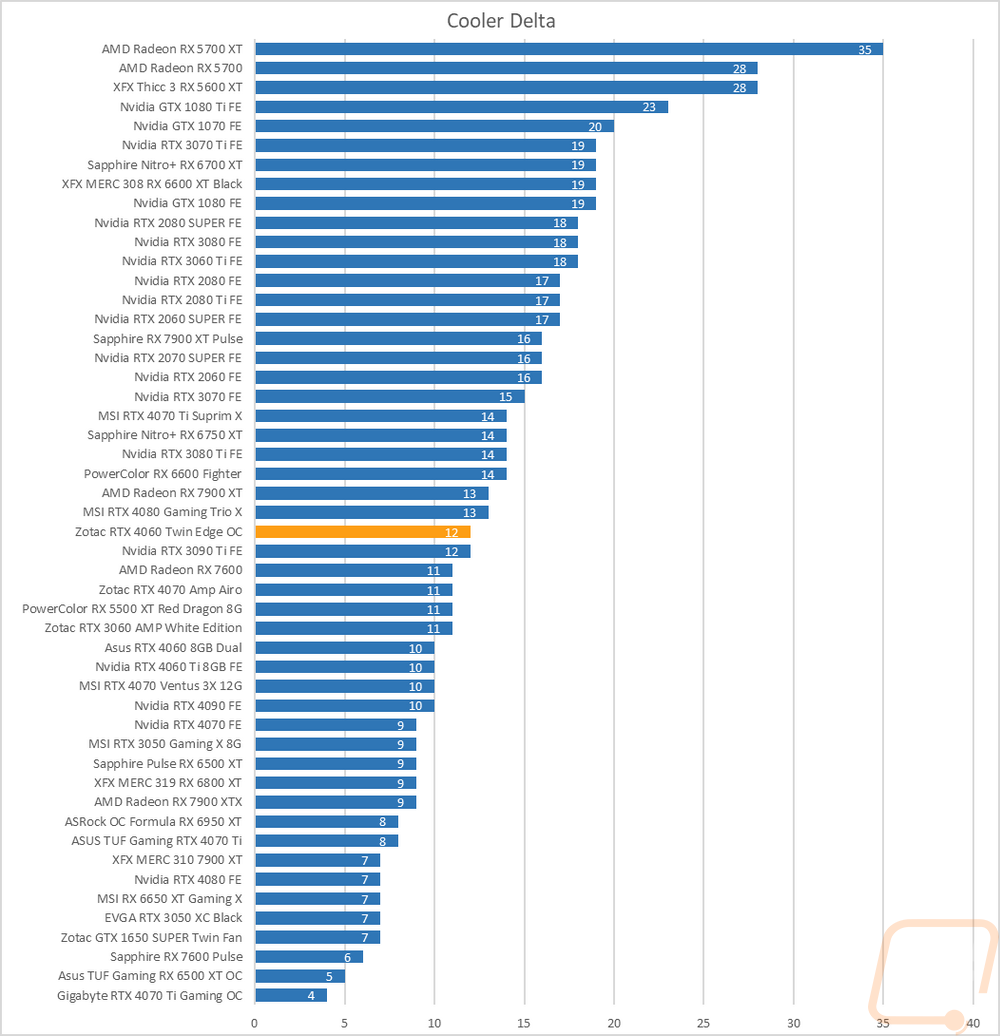Cooling Noise and Power
For my last few tests, rather than focusing on in game performance, I like to check out other aspects of video card performance. These are also the most important ways to differentiate the performance between cards that have the same GPU. To start things off I took a look at power usage.
For this, our new test setup utilizes the Nvidia-designed PCat v2 along with cables to handle both traditional 6 or 8-pin connections as well as the new 12VHPWR. The PCat also utilizes a PCIe adapter to measure any power going to the card through the PCIe slot so we can measure the video card wattage exclusively, not the entire system as we have done in the past. I test with a mix of applications to get both in game, synthetic benchmarks, and other workloads like Blender and AIDA64. Then everything is averaged together for our result. I also have the individual results for this specific card and I document the peak wattage result as well which is almost always Time Spy Extreme. The RTX 4060 Twin Edge OC White Edition averaged 143 watts which was the same as the Asus RTX 4060 Dual, putting them down right down at the bottom of the chart with just the RTX 3050 and the RX 6500 XT sitting below them. This is 13 watts average lower than the RTX 4060 Ti and 43 watts lower than the old RTX 3060 and 50 watts less than the RX 7600. The RTX 4060 Twin Edge OC White Edition did end up running 5 watts higher than the Dual at peak wattage which was interesting, but in the end, the average did sell even things out.


With having exact peak wattage numbers when running Time Spy Extreme I was also able to put together a graph showing the total score for each watt that a card draws which gives us an interesting look at overall power efficiency in the popular and demanding benchmark. The higher Time Spy Extreme wattage that we saw on the RTX 4060 Twin Edge OC White Edition does affect the efficiency when compared to the Dual, putting the Twin Edge down below the curve, but still up over the 7600 and all of the previous generation cards.

My next round of tests were looking at noise levels. These are especially important to me because I can’t stand to listen to my PC whirling. Especially when I’m not in game and other applications are using the GPU. For my testing, though I first tested with the fan cranked up to 100% to get an idea of how loud it can get, then again at 50% to get an idea of its range. The RTX 4060 Twin Edge OC White Edition came in at 37.7 dB for the 50% fan speed test which is down in the bottom section of our charts, but the RTX 4060 Dual was quieter at 37 db. This is even more obvious in the 100% fan speed results where the Twin Edge came in at 57.8 dB to the Duals 55.6 db. They both run a similar fan speed, but the blow-through design and the sheet metal heatsink fins as a whole are a little better at keeping the noise down compared to the machined aluminum block that causes turbulence when enough air blows against it which we could see with the 100% fan speed results being a lot worse than at 50% fan speed.



I also take a look at noise performance while under load. For that when running AIDA64’s stress test I wait until the temperature of the card has leveled off and then measure how loud things are when the card is at its worst-case scenario with the stock fan profile. Here the RTX 4060 Twin Edge OC White Edition was still a little behind the Dual but did better because 100% fan speed wasn’t needed. In fact, under load, it was running at 43% fan speed.


To finish up my testing I of course had to check out the cooling performance. To do this I ran two different tests. I used AIDA64’s Stress Test run for a half-hour each to warm things up. Then I documented what temperature the GPU leveled out at with the stock fan profile and then again with the fans cranked up to 100%. With the stock profile, the RTX 4060 Twin Edge OC White Edition came in at 62c. This was 7 degrees higher than the RTX 4060 Dual but still more than cool enough to keep things comfortable. Cranking the fans up to 100% the RTX 4060 Twin Edge OC White Edition did run cooler, dropping down to 50c which was 5c higher than the Dual. The delta between the two was 12c. For GPU hotspots the RTX 4060 Twin Edge OC White Edition ran 77c with the stock fan profile and was down to 62c at 100% fan speed.




While running the stock fan profile testing I also took the time to get a few thermal images so we could see what is going on. The RTX 4060 Twin Edge OC White Edition runs the hottest on the fan side in the bottom right corner of the left fan which is where most cards are warmer with it being closer to the GPU but the whole bottom half of the left fan runs warmer as well where the top half of the right fan is a lot cooler so the cooler could be doing a better job spreading heat around. The top edge isn’t too hot up on the PCB with 42.1c being the hottest. The hottest spot on the RTX 4060 Twin Edge OC White Edition is the backplate behind the GPU which does show the metal backplate is pulling some heat out that direction, not insulating things which is good.





